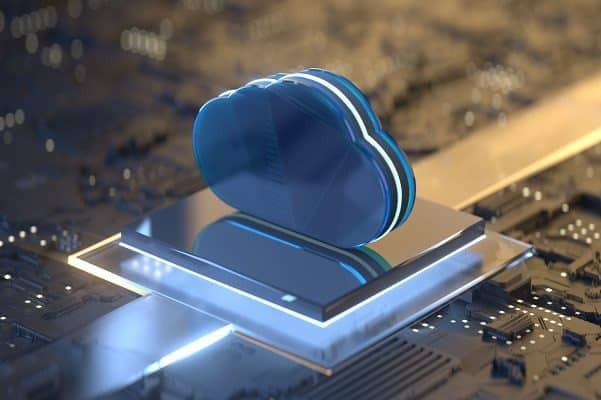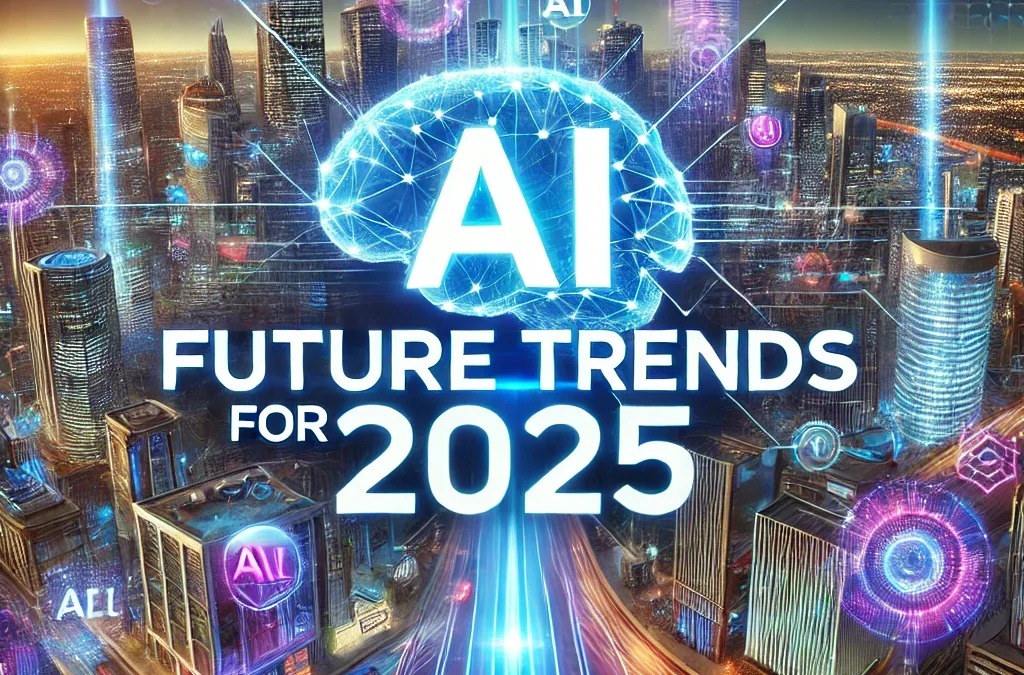
Edge Computing Explained: Why It’s Faster Than the Cloud.
Edge computing is revolutionizing the way data is processed by moving computation closer to the devices generating it, reducing latency, saving bandwidth, and enabling real-time decision-making. By complementing traditional cloud systems, edge computing delivers faster, smarter, and more reliable performance across industries like autonomous vehicles, healthcare, smart cities, industrial automation, retail, and AR/VR applications.
✨ Raghav Jain

Understanding Edge Computing: The Basics
In the world of digital transformation, data is the new oil — but how and where it’s processed determines its true value. Traditionally, most data generated by devices like smartphones, IoT sensors, or surveillance systems is sent to centralized cloud servers for processing. While cloud computing revolutionized storage and scalability, its centralized structure often struggles with latency, bandwidth, and real-time responsiveness — especially as connected devices multiply exponentially. This is where edge computing comes into play.
Edge computing decentralizes data processing by bringing computation and storage closer to the data source — “the edge” of the network. Instead of sending all data to distant cloud data centers, edge devices or local servers handle most of the processing right where data is created. Only essential or summary information is sent to the cloud.
For example, imagine a smart security camera. Instead of uploading every second of footage to the cloud, it processes video locally — detecting motion or unusual activity instantly — and only sends relevant clips to the cloud for storage or further analysis. This dramatically reduces lag, saves bandwidth, and improves security.
The core idea of edge computing is simple yet powerful: process data as close to its source as possible. In an age of billions of IoT devices — from autonomous cars to smart factories — this approach is not just convenient, it’s essential.
How Edge Computing Works: Architecture and Process
Edge computing involves a layered architecture where computing resources are distributed across multiple tiers — from the device itself to local edge servers and finally to the central cloud. Here’s how the process typically works:
- Data Generation at the Edge:
- Devices such as IoT sensors, cameras, or wearables collect real-time data. For instance, a smart thermostat records temperature fluctuations or a wearable device tracks heart rate.
- Local Processing:
- Instead of transmitting this data to a remote cloud, it’s processed on a nearby device or local gateway (like an on-premise microserver). Basic decisions or analytics — such as anomaly detection or pattern recognition — happen here.
- Selective Transmission:
- Only refined or essential data (e.g., summaries, alerts, or processed results) are sent to the cloud for long-term storage or further aggregation.
- Cloud Integration:
- The cloud still plays a role in managing large-scale analytics, machine learning model updates, and centralized oversight — but the heavy lifting happens at the edge.
This architecture creates a distributed network of intelligence, combining the real-time responsiveness of edge devices with the scalability of cloud computing.
Why Edge Computing Is Faster Than the Cloud
1. Reduced Latency
Latency — the time delay between data creation and processing — is the biggest bottleneck in cloud computing. Every millisecond counts in critical applications like autonomous vehicles, healthcare monitoring, or industrial automation. In cloud systems, data must travel to distant servers and back, creating unavoidable lag.
Edge computing slashes this delay by processing data locally. Because the data doesn’t need to travel thousands of miles, response times drop from hundreds of milliseconds to just a few. This enables real-time decision-making, which is vital for applications like:
- Autonomous vehicles that need instant obstacle detection.
- Remote surgeries where a split-second delay can be life-threatening.
- Industrial robotics requiring synchronized movements in milliseconds.
2. Bandwidth Efficiency
Sending massive amounts of raw data to the cloud consumes vast bandwidth. As IoT devices grow, this becomes unsustainable. Edge computing pre-processes data locally — filtering out irrelevant or repetitive information before transmission.
For instance, a network of security cameras might generate terabytes of footage daily. Instead of uploading it all, edge systems analyze video streams locally and send only flagged events to the cloud. This optimizes bandwidth usage and prevents network congestion.
3. Enhanced Reliability
Because edge systems process data locally, they continue functioning even during cloud outages or network disruptions. This independence ensures operational continuity in critical environments like hospitals, oil rigs, or manufacturing plants where downtime is unacceptable.
In contrast, fully cloud-dependent systems may halt operations if connectivity drops, leading to potential losses or safety hazards.
4. Privacy and Security Advantages
Keeping sensitive data near its source minimizes exposure risks during transmission. In sectors like healthcare or finance, where data privacy is paramount, edge computing allows for local encryption and compliance before any data leaves the site.
By decentralizing processing, edge computing reduces the attack surface, making it harder for cybercriminals to exploit centralized vulnerabilities.
5. Scalability and Flexibility
Unlike the cloud, which relies on centralized data centers, edge computing distributes processing across multiple micro-locations. This scalability allows organizations to expand their networks dynamically — adding more edge nodes as needed without overloading the central infrastructure.
Edge vs. Cloud: A Comparative Overview
Feature Edge Computing Cloud Computing Processing Location Near the data source (local devices or servers) Centralized data centers Latency Ultra-low (real-time) Moderate to high Bandwidth Use Minimal (data filtered locally) High (raw data sent to cloud) Reliability High – works offline or during outages Dependent on network availability Security Localized and customizable Centralized – higher exposure risk Scalability Distributed and modular Centralized and scalable but slower Best Use Cases IoT, real-time analytics, autonomous systems Big data storage, AI training, backups Real-World Applications of Edge Computing
1. Autonomous Vehicles
Self-driving cars generate terabytes of data every day — from cameras, LIDAR, and radar sensors. Relying on cloud processing would be impractical and dangerous due to latency. Edge computing allows these vehicles to analyze surroundings instantly, make split-second driving decisions, and share summarized data with the cloud for fleet learning.
2. Smart Cities
From traffic management systems to public safety networks, smart cities depend on real-time responsiveness. Edge computing powers intelligent traffic lights, smart waste management, and surveillance systems that operate autonomously with minimal human intervention.
3. Healthcare
In hospitals, edge-enabled devices such as patient monitors and imaging equipment analyze data locally to detect anomalies like heart irregularities or oxygen drops instantly. This immediate feedback can save lives and reduce the burden on cloud systems.
4. Industrial IoT (IIoT)
Factories deploy edge computing to optimize machinery operations, detect equipment failures early, and maintain consistent production quality. Predictive maintenance becomes more efficient since sensors analyze data locally and trigger alerts only when necessary.
5. Retail and Customer Experience
Edge devices in retail — like smart shelves, AI-driven checkout systems, and personalized advertising displays — process customer data in real-time to improve shopping experiences without cloud delays.
6. AR/VR and Gaming
Augmented and virtual reality require low latency for seamless experiences. Edge computing reduces lag in AR navigation, remote collaboration, and cloud gaming, creating smoother, more immersive interactions.
The Cloud Still Matters: Edge and Cloud in Harmony
It’s crucial to understand that edge computing doesn’t replace the cloud — it complements it. While edge handles real-time data and localized decision-making, the cloud remains essential for:
- Long-term data storage
- AI and machine learning model training
- Cross-regional analytics
- Centralized management and backups
This hybrid model — often called Edge-Cloud synergy — delivers the best of both worlds. The edge ensures speed and responsiveness, while the cloud provides scalability and global coordination.
Challenges and Limitations of Edge Computing
Despite its benefits, edge computing isn’t without hurdles:
- Deployment Complexity:
- Managing thousands of distributed nodes can be difficult compared to centralized cloud management.
- Security Management:
- While local processing reduces data exposure, securing every edge node against physical tampering or hacking remains challenging.
- Hardware Costs:
- Setting up local servers or gateways requires initial investment, which can be significant for large-scale systems.
- Data Consistency:
- Synchronizing data across multiple edge locations and cloud environments can be technically complex.
- Skill Gap:
- The industry still faces a shortage of experts skilled in distributed system architecture and edge analytics.
However, ongoing innovations — like AI-powered edge orchestration and 5G connectivity — are rapidly addressing these issues, paving the way for mass adoption.
The Future of Edge Computing
The rise of 5G networks, AI-driven automation, and the Internet of Things (IoT) is accelerating the growth of edge computing. Analysts predict that by 2030, over 75% of enterprise data will be processed outside centralized data centers.
As businesses prioritize speed, reliability, and privacy, edge computing will become the backbone of emerging technologies — from autonomous drones to smart healthcare ecosystems and remote industrial robotics. The next era of the internet will not be centralized — it will live at the edge.
Would you like me to format this article in ready-to-publish blog style (with headings, bullet formatting, and meta description for SEO) for your website or KDP layout?
In today’s hyper-connected world where billions of devices constantly generate massive streams of data, the speed at which this data is processed determines the efficiency of everything from self-driving cars to smart homes. Traditional cloud computing—once celebrated as the ultimate solution for storage and scalability—has started revealing its limitations, particularly in applications that require real-time responsiveness. This is where edge computing emerges as a revolutionary concept, reshaping how and where data is processed. In essence, edge computing decentralizes data processing by moving it closer to the “edge” of the network—the point where data is created—rather than relying on distant centralized cloud servers. The idea is straightforward yet profoundly impactful: instead of sending every piece of information to the cloud for analysis, devices themselves or nearby local servers handle most of the processing. Only refined or critical data is then sent to the cloud for further aggregation or long-term storage. This drastically reduces the time delay known as latency, improves reliability, and cuts down bandwidth consumption. Imagine a smart security camera, for instance. Instead of uploading all its footage to the cloud for motion detection, the camera itself analyzes the video locally and only uploads footage that shows suspicious activity. This not only saves time and bandwidth but also enhances privacy, as most data never leaves the local network. The fundamental difference between edge and cloud computing lies in proximity—cloud data centers are often thousands of miles away from the data source, while edge devices process information right where it’s generated. This architectural difference results in far superior performance for time-sensitive operations. To understand why edge computing is faster, consider the role of latency. When a device sends data to a cloud server, it travels through multiple network nodes before reaching its destination and then back again once processing is complete. Even a delay of a few hundred milliseconds can have severe consequences in fields like autonomous driving, remote surgery, or industrial automation. Edge computing solves this by eliminating the round trip—processing happens locally in microseconds instead of seconds. Another key advantage is bandwidth efficiency. As more Internet of Things (IoT) devices come online, the sheer volume of data generated is overwhelming cloud networks. By pre-processing and filtering data locally, edge computing ensures that only relevant information is transmitted, dramatically reducing the strain on network infrastructure. A network of smart sensors in a factory, for example, can continuously monitor machinery, detect anomalies in real time, and send only summarized alerts to the cloud instead of raw sensor data. This makes operations not just faster but also more economical. Beyond speed and efficiency, edge computing offers significant reliability improvements. Cloud-dependent systems can suffer during connectivity disruptions, but edge systems can continue operating independently, making them ideal for environments like offshore oil rigs, remote medical facilities, or military bases where uninterrupted operation is crucial. Security and privacy are also enhanced in edge computing environments because sensitive information can be encrypted and processed locally rather than being transmitted over the internet. This approach reduces the attack surface and complies better with stringent data protection laws, such as GDPR and HIPAA. However, the relationship between edge and cloud computing is not adversarial but complementary. The cloud still plays a vital role in central management, large-scale analytics, and machine learning model training. In fact, the most powerful implementations use a hybrid edge-cloud model, where the edge handles real-time decision-making while the cloud manages heavy computation and long-term insights. The industries benefiting most from this model are numerous. In autonomous vehicles, edge computing enables split-second decision-making by processing sensor data locally, ensuring immediate responses to traffic changes or obstacles. In healthcare, wearable devices and hospital monitors use edge systems to detect irregularities in heart rate or oxygen levels, providing instant alerts without depending on external servers. Smart cities rely on edge computing to optimize traffic lights, monitor air quality, and improve energy management systems, allowing for immediate responses to local conditions. In industrial IoT, factories deploy edge-enabled sensors that predict equipment failures, optimize workflows, and reduce downtime. Even in retail, smart shelves and cashier-less checkout systems use edge computing to analyze customer behavior and stock levels in real time. Furthermore, the rise of augmented and virtual reality (AR/VR) applications has created a massive demand for ultra-low latency processing, which only edge computing can provide effectively. When latency exceeds a few milliseconds, VR experiences become disorienting or laggy—edge computing solves this by processing frames and user interactions locally, making immersive experiences smoother and more natural. Looking ahead, 5G technology is poised to amplify the benefits of edge computing even further. The combination of high-speed data transfer and near-zero latency will enable even more advanced use cases, such as autonomous drone fleets, remote robotic surgeries, and real-time language translation. Despite these advantages, edge computing faces challenges of its own. Deploying and managing thousands of distributed edge nodes can be complex and costly. Maintaining consistent data synchronization between edge devices and the cloud requires sophisticated orchestration systems. There’s also the challenge of securing multiple endpoints against cyberattacks and ensuring hardware reliability in diverse environments. Nevertheless, technological advancements are quickly addressing these issues. AI-based edge management platforms, lightweight containerized applications, and remote monitoring solutions are simplifying deployment and maintenance. Over time, the economic and operational advantages of edge computing will outweigh these challenges. In fact, industry analysts predict that by 2030, more than 75% of enterprise-generated data will be processed outside traditional cloud or data center environments. This marks a major paradigm shift in computing. The world is moving toward distributed intelligence, where decision-making happens at multiple layers of the network rather than a single centralized location. In conclusion, edge computing represents the next stage in the evolution of digital infrastructure—where speed, efficiency, security, and autonomy converge. By processing data where it is produced, it eliminates latency, conserves bandwidth, and enhances reliability, making it faster and smarter than traditional cloud systems for real-time operations. While the cloud will always have its place for heavy computation and global coordination, the edge is where the action happens. As industries continue to demand instant insights and uninterrupted performance, edge computing isn’t just faster than the cloud—it’s the foundation of a new era of intelligent connectivity.
In the rapidly evolving digital landscape, where billions of connected devices continuously generate immense volumes of data every second, the need for faster, more efficient, and intelligent data processing has never been more critical, and this is precisely where edge computing has emerged as a transformative technology that is redefining the traditional paradigms of cloud computing by bringing computation and storage closer to the source of data rather than relying solely on centralized data centers located miles away, which often results in latency, bandwidth bottlenecks, and delayed decision-making, particularly in applications that demand real-time responsiveness such as autonomous vehicles, industrial automation, healthcare monitoring, smart cities, augmented reality, and a host of Internet of Things devices; at its core, edge computing is designed to decentralize computing resources by placing processing power on local devices, gateways, or edge servers, enabling immediate analysis and response without the need to send raw data over long distances to remote cloud infrastructures, which not only improves speed but also reduces network congestion and enhances reliability, as local processing ensures that operations can continue seamlessly even if there are temporary network interruptions, unlike cloud-dependent systems that risk downtime when connectivity is lost; one of the most striking advantages of edge computing is ultra-low latency, which is achieved because data no longer needs to traverse complex network routes to reach a centralized server before a response is returned; for example, in autonomous cars, sensors such as LIDAR, cameras, and radar generate terabytes of data per day that must be analyzed instantaneously to detect obstacles, adjust speed, and ensure passenger safety, and any delay—even in milliseconds—can be catastrophic, whereas edge computing allows these calculations to occur on-board or at a nearby processing node, guaranteeing real-time decision-making that is simply unattainable with traditional cloud-only architectures, and this principle applies equally to remote surgeries where surgeons rely on robotic instruments controlled over a network, industrial robots performing synchronized tasks on a factory floor, and smart grids responding to fluctuations in electricity supply and demand in real time; in addition to speed, edge computing significantly improves bandwidth efficiency by filtering and processing data locally so that only essential insights or summaries are transmitted to the cloud, which reduces the volume of data traversing networks and lowers operational costs, for instance, a network of surveillance cameras in a smart city or industrial environment can generate massive continuous streams of video data, but by analyzing footage on local edge devices and sending only critical alerts or abnormal activity to the cloud, organizations can save enormous amounts of bandwidth, avoid congestion, and still maintain robust data storage and analytics in the cloud for long-term reporting, while simultaneously enhancing privacy and security, since sensitive information such as personal health metrics, financial transactions, or video surveillance can be processed and encrypted locally, minimizing exposure to cyber threats during transmission and enabling compliance with stringent data protection regulations such as GDPR and HIPAA; edge computing’s distributed architecture also provides superior reliability and resilience, as the failure of one edge node does not incapacitate the entire system, and local processing ensures continuous operation in critical environments like hospitals, manufacturing plants, remote research stations, or military installations, where downtime is not an option, and this decentralized design allows businesses to scale dynamically by adding additional edge devices or microservers without overwhelming centralized infrastructure, unlike cloud systems which may face capacity bottlenecks or performance degradation under massive data loads; furthermore, edge computing and cloud computing are not mutually exclusive but complementary, with edge handling real-time analytics and local decision-making while the cloud manages large-scale computation, long-term data storage, advanced AI and machine learning training, and centralized oversight, creating a hybrid edge-cloud ecosystem that leverages the strengths of both approaches; real-world applications of edge computing illustrate its transformative potential across diverse industries: autonomous vehicles rely on edge nodes to process sensor data instantly for collision avoidance and route optimization, smart cities utilize edge-powered traffic lights, surveillance systems, and energy grids for immediate adjustments to changing conditions, healthcare facilities employ edge-enabled monitoring devices to track patients’ vital signs and trigger alerts within milliseconds, industrial IoT systems analyze machine performance on-site to predict failures and schedule maintenance proactively, retail environments use edge devices to personalize customer experiences, optimize inventory, and power cashier-less checkout systems in real time, and AR/VR applications leverage edge computing to minimize latency and deliver immersive, responsive experiences to users, all of which would be impractical or dangerously slow if processed exclusively through remote cloud servers; with the advent of 5G technology, which promises unprecedented data transfer speeds and ultra-low latency, edge computing is expected to scale even further, enabling applications such as swarms of autonomous drones, remote robotics, real-time translation services, and instantaneous AI-driven decision-making across multiple distributed locations; however, deploying edge computing comes with its own challenges, including the complexity of managing numerous distributed nodes, ensuring consistent data synchronization with the cloud, securing multiple endpoints from cyber threats, and the initial cost of setting up local processing hardware, though advancements in AI-driven orchestration, containerized applications, lightweight microservers, and remote monitoring platforms are progressively overcoming these obstacles, making edge computing not only feasible but economically and operationally advantageous; looking ahead, industry analysts predict that by 2030, over 75% of enterprise-generated data will be processed at the edge, signifying a fundamental shift from centralized to distributed intelligence, where the network itself becomes an active participant in data analysis and decision-making rather than merely a conduit to a faraway server, and this shift heralds a new era of computing where speed, reliability, security, and real-time responsiveness are paramount, positioning edge computing as the backbone of future technologies, from autonomous systems and smart cities to healthcare, industrial automation, retail, and immersive digital experiences, thereby making it clear that while the cloud will continue to provide essential storage and large-scale analytics, the real power, immediacy, and efficiency of modern computing now resides at the edge, closer than ever to the devices, sensors, and people that generate and consume the data, fundamentally redefining our approach to information processing, connectivity, and operational intelligence.
Conclusion
Edge computing is transforming how we handle the ever-growing ocean of digital data. By bringing processing closer to the source, it minimizes latency, optimizes bandwidth, and enhances reliability. While the cloud remains vital for storage and large-scale analytics, edge computing’s distributed design ensures faster, safer, and more efficient performance for time-critical applications.
In short, the future of data processing isn’t in distant clouds — it’s right at the edge.
Q&A Section
Q1:- What is edge computing?
Ans:- Edge computing is a decentralized computing model where data is processed near its source (on local devices or servers) rather than sending it to distant cloud data centers.
Q2:- Why is edge computing faster than cloud computing?
Ans:- Because it reduces data travel distance and processes information locally, cutting latency from hundreds of milliseconds to near real-time speeds.
Q3:- Does edge computing replace the cloud?
Ans:- No. Edge computing complements the cloud — handling local processing while the cloud manages storage, analytics, and long-term insights.
Q4:- What are some examples of edge computing in use today?
Ans:- Autonomous vehicles, smart city systems, healthcare monitoring, industrial IoT, and AR/VR platforms all use edge computing for real-time responses.
Q5:- What challenges does edge computing face?
Ans:- Challenges include complex deployment, hardware costs, data synchronization issues, and security management across multiple edge nodes.
Similar Articles
Find more relatable content in similar Articles

AI in Education: Personalized ..
Artificial Intelligence is tra.. Read More

The Rise of Generative AI in 2..
By 2025, generative AI has tra.. Read More

Modular phones/devices: repair..
Modular phones and devices are.. Read More

Edge Computing Explained: Why ..
Edge computing is revolutioniz.. Read More
Explore Other Categories
Explore many different categories of articles ranging from Gadgets to Security
Smart Devices, Gear & Innovations
Discover in-depth reviews, hands-on experiences, and expert insights on the newest gadgets—from smartphones to smartwatches, headphones, wearables, and everything in between. Stay ahead with the latest in tech gear
Apps That Power Your World
Explore essential mobile and desktop applications across all platforms. From productivity boosters to creative tools, we cover updates, recommendations, and how-tos to make your digital life easier and more efficient.
Tomorrow's Technology, Today's Insights
Dive into the world of emerging technologies, AI breakthroughs, space tech, robotics, and innovations shaping the future. Stay informed on what's next in the evolution of science and technology.
Protecting You in a Digital Age
Learn how to secure your data, protect your privacy, and understand the latest in online threats. We break down complex cybersecurity topics into practical advice for everyday users and professionals alike.
© 2025 Copyrights by rTechnology. All Rights Reserved.